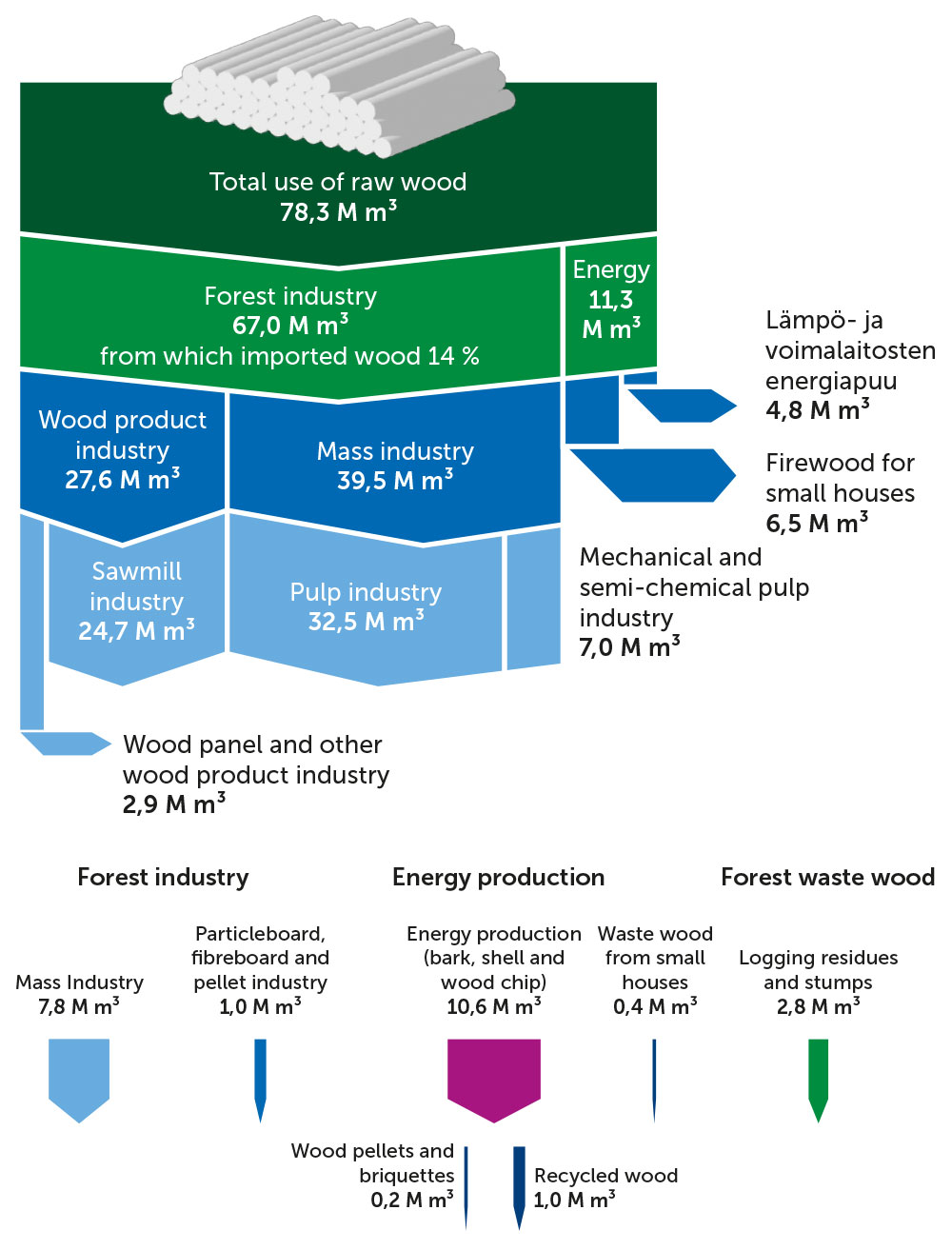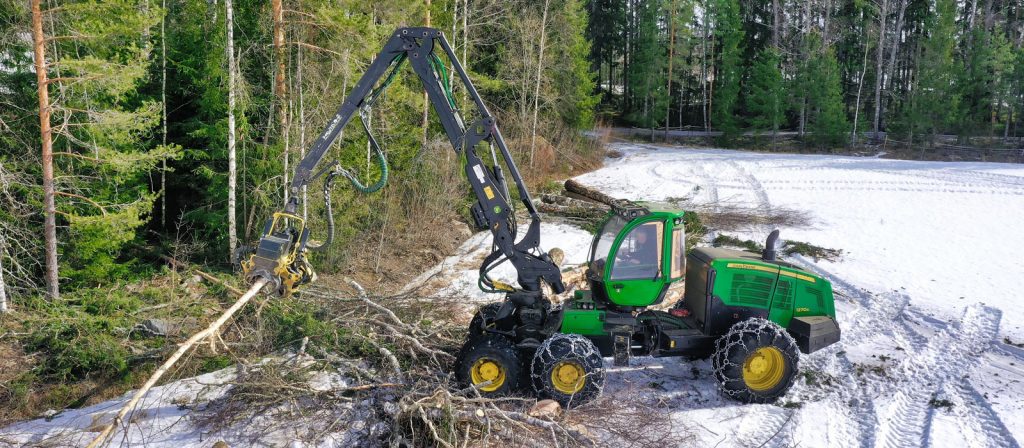There are many forest areas in Finland where it has not been possible to carry out primary thinning because there is not enough demand for the energy wood obtained from them. Measures for the treatment of young forests and initial thinning will increase the carbon sequestration of forests in the coming years as growth becomes more efficient. The increase in the use of energy wood does not increase felling or reduce the forest area, because energy wood comes from the by-products of material wood cutting. According to the Natural Resources Institute Finland LUKE, the total annual growth of forests is over 100 million m³ (2019–2022).
Energy wood is wood or timber suitable for energy production, which has not been used and is not in demand for timber use in the forest industry. This kind of wood includes the heartwood of growing forests, the clearing wood and branches created in connection with forest clearing, and the top and branch pulp from end felling. A lot of this type of energy wood also accumulates in connection with maintenance of power lines and roadsides. These energy flows based on wood-based biomass are called forest chips.
The sustainable energy use of wood is considered carbon-neutral, so replacing imported fossil fuels such as oil, coal and natural gas, as well as domestic peat, with biomass reduces greenhouse gas emissions. Domestic wood-based biomass creates jobs, livelihoods, export and tax revenues in Finland and improves the security of supply of energy production.

The total growth of the forests is over 100 million cubic meters per year.
(Raw wood utilization in Finland 2020, LUKE 2021)

